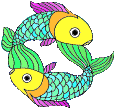 Pisces
Pisces
In the past year, the Center has sponsored visitors to come to the Center to advise us on the Pisces project. Currently, Pisces has a well-developed user-interface, can compute level curves in the plane (both algebraic varieties and level sets of non-algebraic functions), and implicitly-defined surfaces in three-space.
Pisces can animate a family of level sets as a parameter is varied, and can locate singularities in planar curves. Pisces has five picewise-linear algorithms; two predictor-corrector algorithms are currently under development. This second class of algorithms will allow us to trace curves and surfaces that are imbedded in Euclidean space of arbitrary dimension.
We are currently studying the behavior of algorithms in the neighborhood of singular curves; we are developing algorithms that detect and locally resolve the geometric structure of singular curves in a neighborhood of the singularities. We do not know of any algorithms that can carry out this task for level sets of generic functions. We hope to extend this study to provide users with the first general-purpose algorithm that correctly identifies and depicts singular surfaces.
We are working on a mechanism by which users may derive new equations from existing equations. For example, if the user has specified a function, Pisces should be able to derive a new function which is the determinant of the Jacobian of the original function. The derivable functions should include those functions of interest to the dynamical systems community.
In the fall of 1995 we will begin distributing Pisces to test-sites outside of the University of Minnesota. We are preparing documentation to assist this process.
In the future we will continue our efforts to provide users with high-level mechanisms to compute and graphically display level curves and surfaces by means of a Pisces command language. We will concentrate on communication between algorithms, so that Pisces becomes an extensible platform for computing and visualizing implicitly-defined curves and surfaces.
![[Pisces]](../pix/pi.gif) The Pisces Home Page
The Pisces Home Page
Comments to: pisces@geom.umn.edu
Created by Fredrick Wicklin
Converted on August 3, 1995 by Erik Streed
Last Modified: August 3, 1995
Copyright © 1995 by
The Geometry Center,
all rights reserved.